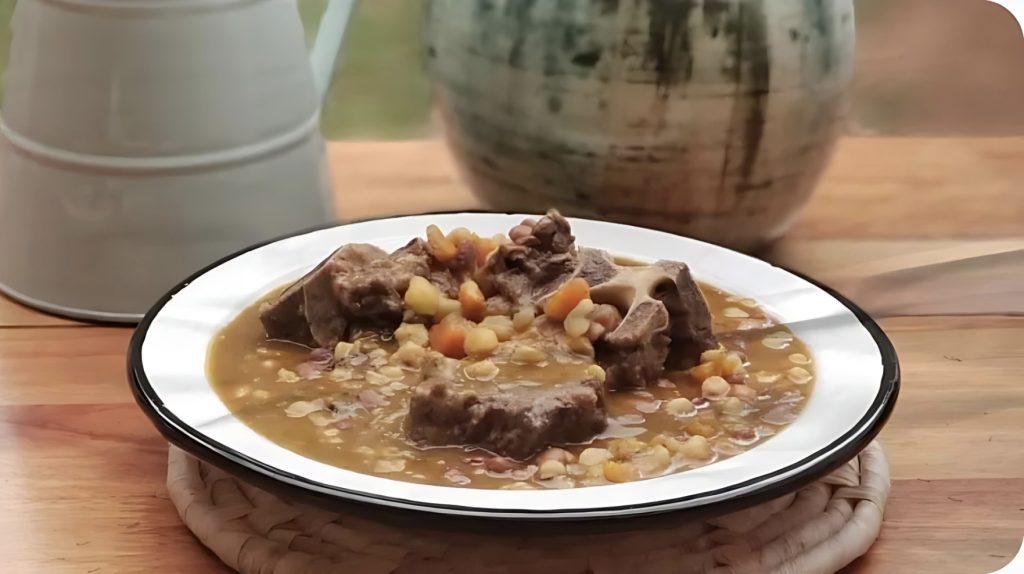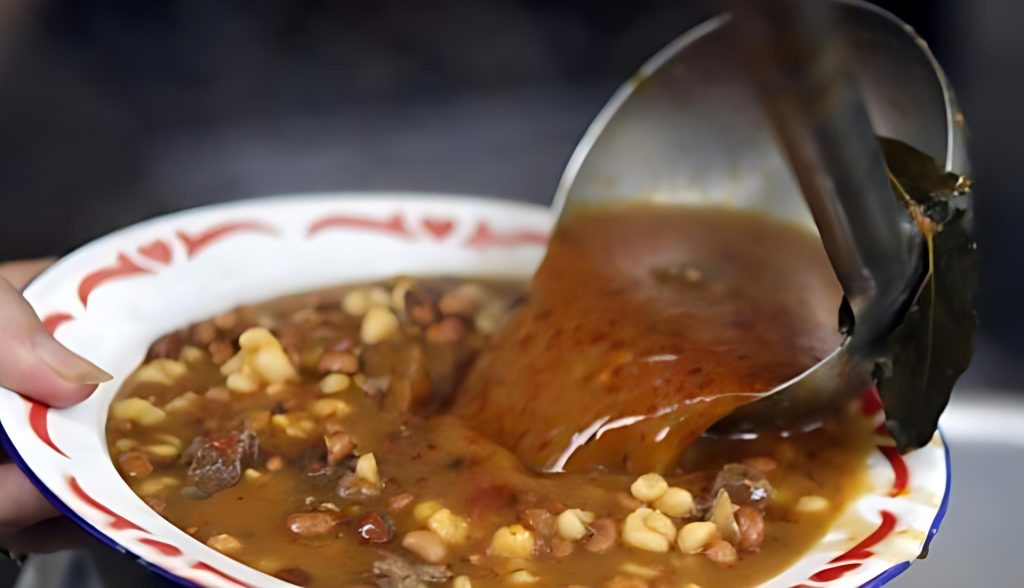In Paraguay, on 1 October every year, families mark the tradition of “Mr. October” (Karai Octubre in Jopara, the mix of Spanish and Guaraní language). His name combines the Guaraní word for lord or mister (karai) with the Spanish word for October (octubre), describing a folkloric figure who embodies hunger and scarcity. Mr. October is believed to check if people stored food for the lean months. To avoid his curse of poverty, they serve specific food: jopara. Because jopara is not only this blend of Spanish and Guaraní language, but also a traditional Paraguayan dish.
The origin of Mr. October
The story of the folkloric character traces back to colonial times, when Jesuits (Catholic missionaries in Paraguay in the 17th and 18th century) encouraged indigenous communities to save grains for the lean months from October to December. They created the tale of a stern, barefoot peasant with a whip who punished homes without food. This myth served as a moral lesson, reminding households of the value of foresight and thrift.
Another version holds that long before the Spaniards arrived in 1537, indigenous groups already ate a stew of maize and beans. The Spaniards later introduced dairy and vegetables, enriching these recipes. The Jesuits added not the food but the legend, giving it cultural meaning. Thus, the mythical figure became both a guardian of abundance, and a reminder of communal responsibility.

The culinary ritual of Jopara
Jopara, meaning “mixture” in Guaraní, is the central dish of this day. It combines ingredients such as cracked white corn, beans, pumpkin, onions, green bell peppers and Paraguayan cheese. Some versions add meat or chorizo, slow-cooked in iron pots over wood or charcoal. The meal, often prepared a full morning, is served with cassava or tortillas (a small, puffy and round fried bread), becoming a collective meal that nourishes body and spirit.
For rural families, the making of jopara is a ritual in itself. The process involves soaking the beans and cracked white corn overnight, chopping vegetables and carefully stirring the stew until it thickens. At midday, people gather to share the dish, symbolising unity and prosperity. Meanwhile, Karai Octubre is believed to visit homes, rewarding those who serve jopara, and cursing with scarcity those who neglect the custom.
From countryside to urban tables
Although the ritual is strongest in the countryside, modern urban life has reshaped its practice. In cities, where office schedules leave little time for lengthy preparations, restaurants and markets step in on 1 October, food stalls, municipal markets and eateries prepare vast quantities of jopara to meet the demand of citizens eager to honour the date without spending hours at the stove.
This adaptation shows how Paraguayan culture preserves its heritage while adjusting to contemporary rhythms. At the core of these traditions are staple ingredients such as maize and cassava, which have long shaped the country’s culinary identity. Whether cooked slowly at home in the countryside or purchased quickly in the city, the essence remains the same: sharing food to ensure prosperity. The presence of Karai Octubre continues to hover symbolically over the nation, reminding the people in Paraguay that abundance depends not only on resources but also on respect for tradition.

The Jopara recipe
Servings: 5
Calories per serving: 200 kcal
Ingredients
- Cracked white corn (locro) – 7 tablespoons (105 g).
- Black or red beans – 7 tablespoons (88 g).
- Onion – 1 large (200 g).
- Diced pumpkin – 2 cups (160 g).
- Green pepper – 1 small (100 g).
- Paraguayan cheese, crumbled – 5 tablespoons (75 g).
- Garlic – 2 cloves.
- Vegetable oil – 2 tablespoons (10 mL).
- Hot water – 15 cups (3 L).
- Iodised salt – 2 teaspoons (10 g).
Preparation
- Soak the cracked white corn and beans overnight, or for one hour in hot water before cooking. Drain and set aside.
- Wash and cut all vegetables into medium pieces.
- In a large pot, sauté the onion and garlic in oil until soft and fragrant.
- Add the hot water, salt, maize and beans. Cook until the grains are tender.
- Add the pumpkin and green bell pepper, then simmer until both are soft.
- Remove from the heat and stir in the crumbled Paraguayan cheese.
- Let the stew rest for a few minutes, then serve the Jopara hot with cassava or tortillas.


